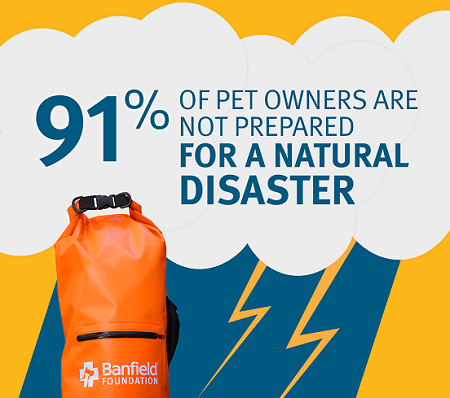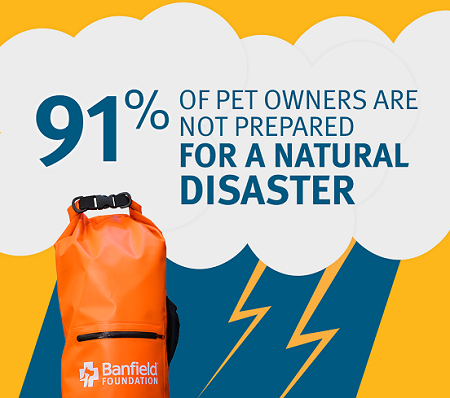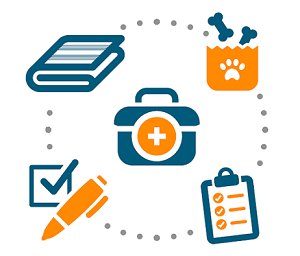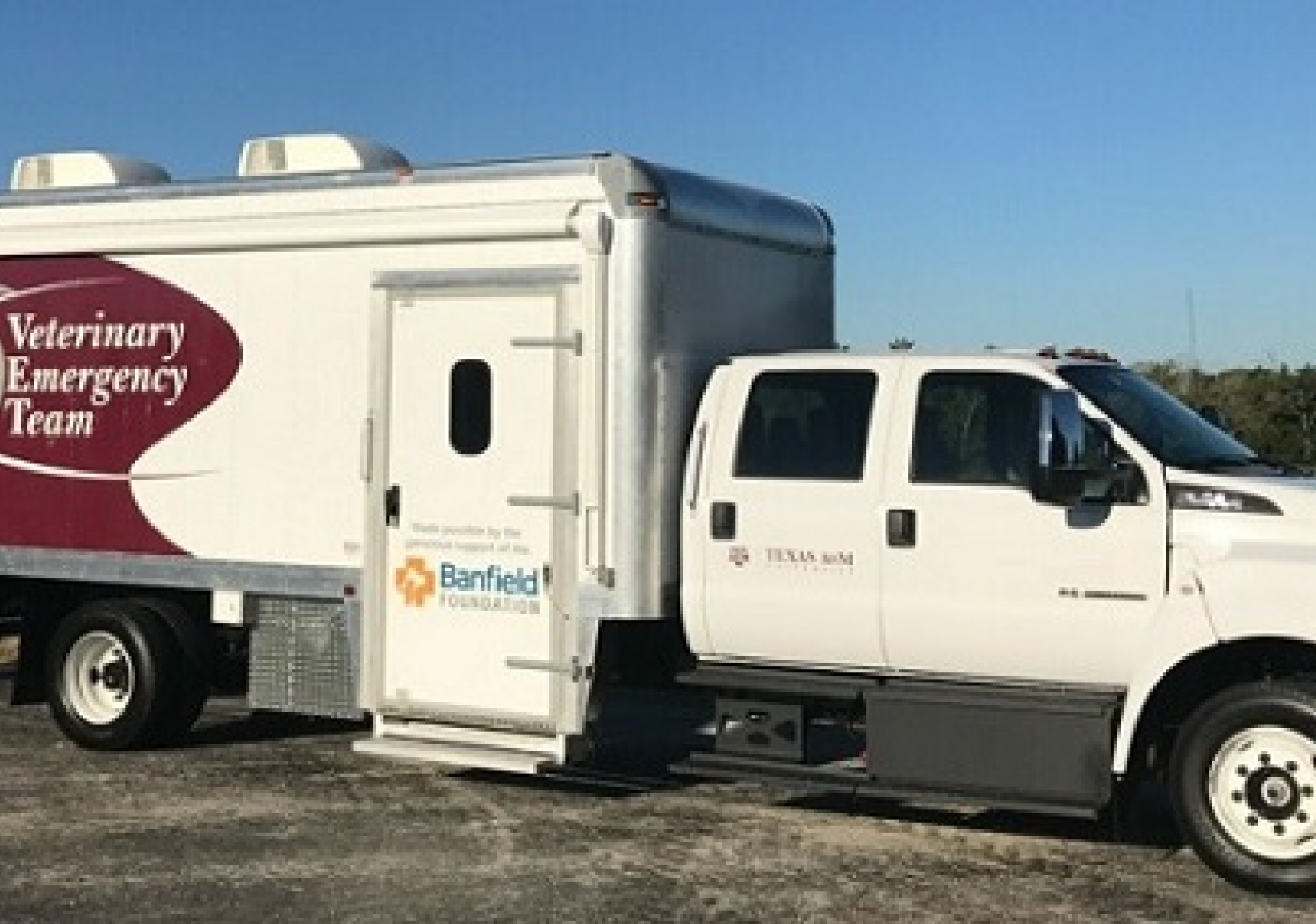
Portland, OR June 04, 2018
“The effects of a natural disaster can be devastating to both people and pets. Watch our public service announcement with TV personality Sean Lowe to learn the importance of being prepared.”
Be prepared for when disaster strikes
The effects of a natural disaster can be devastating to both people and pets.
Unfortunately, the majority of pet owners aren’t equipped for an emergency. A 2018 survey conducted by Banfield Pet Hospital® revealed 91 percent of pet owners are not prepared for the next natural disaster. We want to help pet owners be prepared for when — not if — the next disaster strikes.
Consider making a kit at home with the essentials, including a waterproof bag filled with a blanket, dog or cat treats, stress-reducing products, collapsible water bowl, important documentation like veterinary records, microchip information, and a contact list of the nearest shelters and emergency clinics.
Use the resources below and be prepared!


Make a plan
In addition to a disaster kit with supplies, it’s important to have a plan in place so you know what to do during and after a disaster. Banfield Pet Hospital has tips and proactive measures you can take to help keep your pet safe if the unthinkable happens.
Mobilizing disaster relief
Texas A&M Veterinary Emergency Team (VET)® is the largest, most sophisticated veterinary medical disaster response team in the country. Banfield Foundation® is the sole funder of their new state-of-the-art mobile veterinary unit.
In an effort to ensure coast-to-coast support, the Banfield Foundation also funds two disaster relief vehicles with American Humane — one of which is permanently stationed in the Northeast and the other in Los Angeles — both designed to deploy in the aftermath of disasters to aid impacted pets.
In addition, pet owners who are forced to evacuate during a disaster often have difficulty finding pet-friendly accommodations, which is why the foundation provided a grant to the Louisiana Department of Agriculture and Forestry to purchase and equip a new mobile sheltering vehicle that can house up to 65 pets during an emergency or natural disaster.


Donate now
Help our efforts to provide preventive and emergency veterinary care, shelter, and disaster relief to vulnerable pets at home and in under-resourced communities across the nation.
Every dollar makes a difference.
Every donation is 100% tax deductible.
